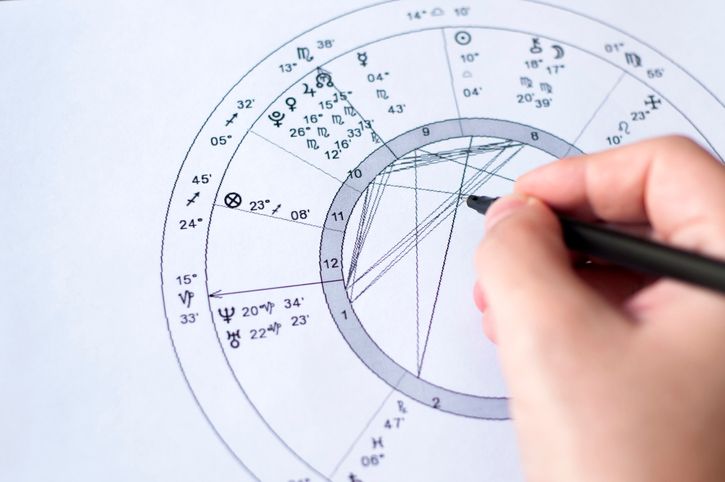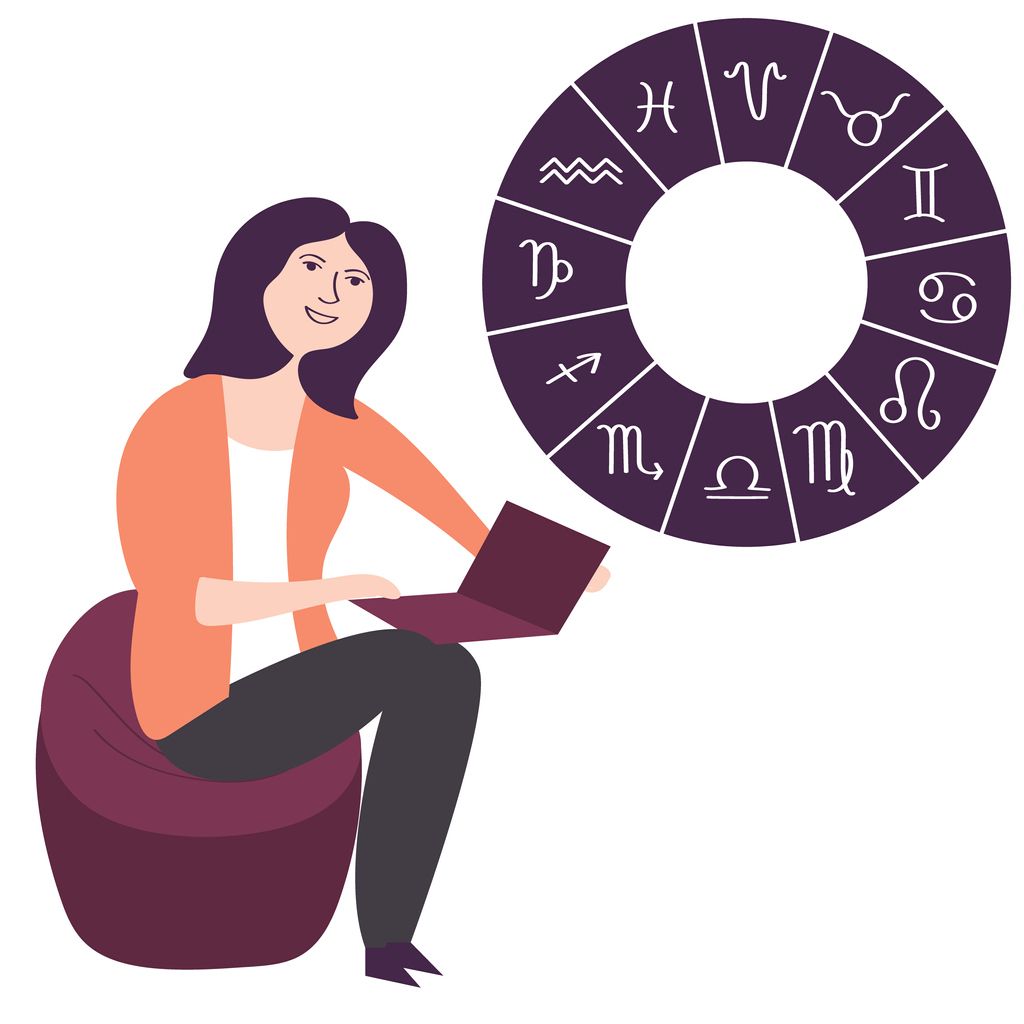It’s always smart to stop and ask for directions…especially before you attempt to navigate the cosmos! If you’re new to astrology, you’re bound to see a lot of unfamiliar terms that you don’t understand. What’s a cusp? Are you supposed to ask your parents for a natal chart? Does transit mean you’re going on a trip sometime soon? Do houses have something to do with where you live? It can all get more than a little confusing!
Don’t stress! We’ve demystified all the astrology terms you need to know. Read through our handy glossary for a quick primer on all the most important astrology terms, or just look up any unfamiliar concepts as you come across them on your astrological journey. Without further ado, here is our glossary of astrology terms – all laid out in alphabetical order, because while the cosmos can be complex and hard to read, a glossary really shouldn’t be!
Ascendant Sign – This is the sign that was rising on the eastern horizon when you were born. It’s calculated using your exact time of birth and represents your outer self or social personality. Want to learn more? We have an in-depth article on your ascendant sign right here!
Aspects – These are the various angular relationships that are formed as the planets move in their orbits around the sun. When two planets form an aspect, their energies either combine or work against each other.
Birth chart – Your birth chart shows which celestial elements were residing in each of the astrological houses at the moment you entered the world. Essentially a map of the positions that the moon, planets, and stars were in at the time of your birth, your birth chart gives the most comprehensive picture of who you are and who you may become.

Cardinal signs – The four cardinal signs are: Aries, Cancer, Libra, and Capricorn. Each relates to a change of season.
Cusp – This can refer to a few different things. The “cusp of a sign” refers to the period of time when one sign ends and another begins. A “cusp” can also refer to the beginning of a house in a chart. A “cusp sign” refers to the idea that a person born during a cusp period can exhibit qualities of two signs. This is a complicated concept that comes with some controversy. If you want to get all the details, check out our article on cusp signs!
Elements – The four elements in astrology are: fire, earth, air, and water. Each star sign is assigned an element, and each element has distinct characteristics associated with it. Want to learn more? We have a full article detailing everything you need to know about the four elements in astrology!
Equinox – The Spring Equinox and Autumnal Equinox mark the two days of the year when the sun is directly above the equator, making the length of night and day equal. In the Northern Hemisphere, the Spring Equinox – or Vernal Equinox – marks the start of spring and the Autumnal Equinox marks the start of autumn. It’s not uncommon to see these major events mentioned in horoscopes.
Fixed signs – The fixed signed are: Taurus, Leo, Scorpio, and Aquarius. Each is associated with momentum and dedication.
House – In addition to the 12 signs, the zodiac wheel is also divided up into 12 houses. Think of it like a pie chart. Each “slice” is a house, and each house represents a specific area of life, such as love or career.

Moon Phases – Did you know that the moon cycles through four phases every 28 days? These phases each have their own distinct energy and impact everything from the tides in the ocean to the way we feel, so they may pop up in your horoscope from time to time.
Moon Sign – Your moon sign relates to the position of the moon when you were born and is calculated using your exact birth time and location. Your moon sign is extremely important because it represents your inner emotional self. Check out our in-depth article to learn all about moon signs!
Mutable signs – The mutable signs are: Gemini, Virgo, Sagittarius, and Pisces. These signs are associated with adaptability and the end of a season.
Natal Chart – This is just a more technical name for your birth chart!
Retrograde – This term is to describe a phenomenon where planets can sometimes look like they’re moving backwards in the sky. Rest assured that planets don’t actually move backwards, but it can appear that way from our perspective here on Earth. When a planet is in retrograde, events on Earth are often chaotic. The most famous example is Mercury in retrograde, but other planets – including Venus and Mars – also retrograde from time to time.
Rising Sign – This is just another name for your ascendant sign.
Ruling Planet – Each sign has a ruling planet associated with it. Your sign’s ruling planet is important to know because its specific energies have a primary influence on you and your life.

Saturn Return – This term refers to the time in your life when Saturn approaches the same point in the sky that it was at when you were born. This typically happens for the first time when you are 27 – 30 years old. It will happen again twice more in your life, and each time you can expect a whole host of chaos. But, when you come out the other side, you’ll be a better and stronger person who is ready to take on the next phase of your life.
Solstice – The Winter Solstice and Summer Solstice represent the longest and shortest days of the year. In the Northern Hemisphere, the Summer Solstice marks the longest day of the year and is considered the start of summer, while the Winter Solstice marks the shortest day of the year and is considered the start of winter. It’s not uncommon to see these significant events mentioned in your horoscope.
Sun Sign – Your sun sign speaks to your overall personality and is determined by the month and day of your birth. This is the most popular element of astrology and is commonly used for horoscopes. The horoscopes you get from Starlies are based on your sun sign!
Transit – This term is used to describe when a planet is aspecting another planet, moving into a new house, or moving into a new sign. Multiple transits can happen on any given day, which is one of the reasons that astrology is so complex and interesting!
A better understanding of astrology terms and concepts help you dig deeper and uncover hidden insights about yourself, but it also just makes astrology a lot more fun! It’s our mission to make astrology simple, fun, accessible for everyone to understand! We created our glossary to break down the major concepts and terms that astrologers use and turned them into a few easy-to-understand sentences, so you can get the info you need and quickly get back to learning all about your stars! But if you’re still unsure or want to learn more about a specific concept, we’re here for you! Reach out via email or message us on social media and we’ll have your back with all the answers you need.

